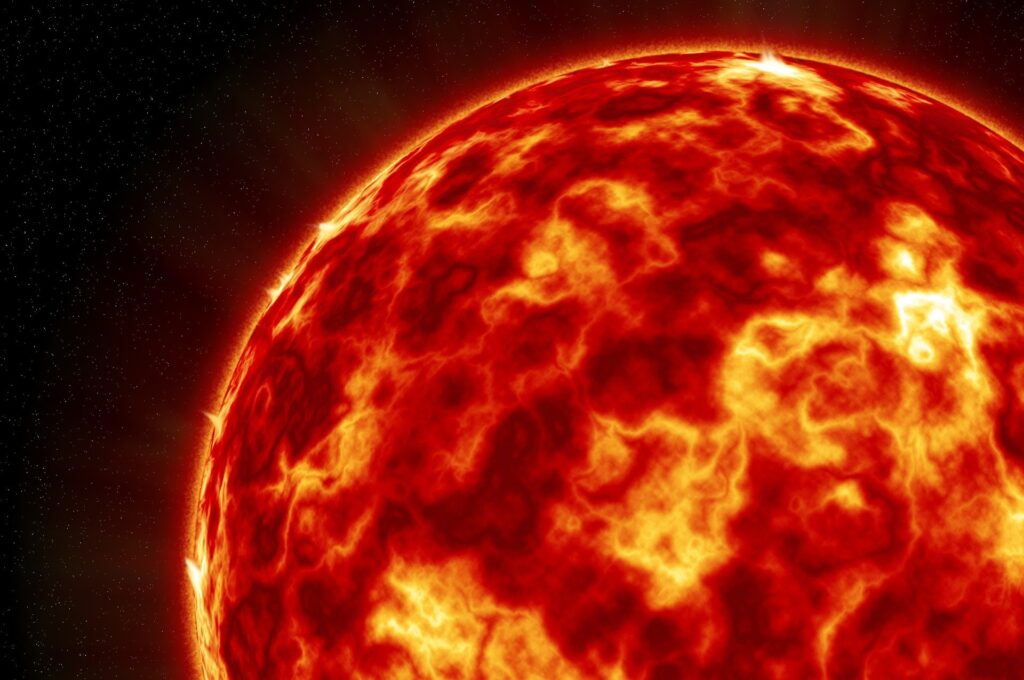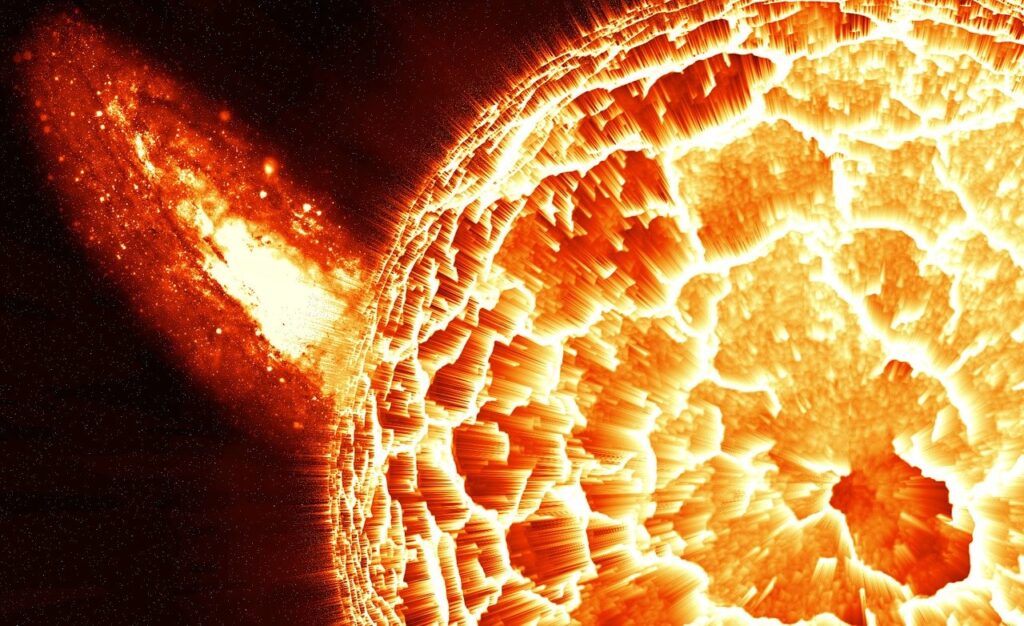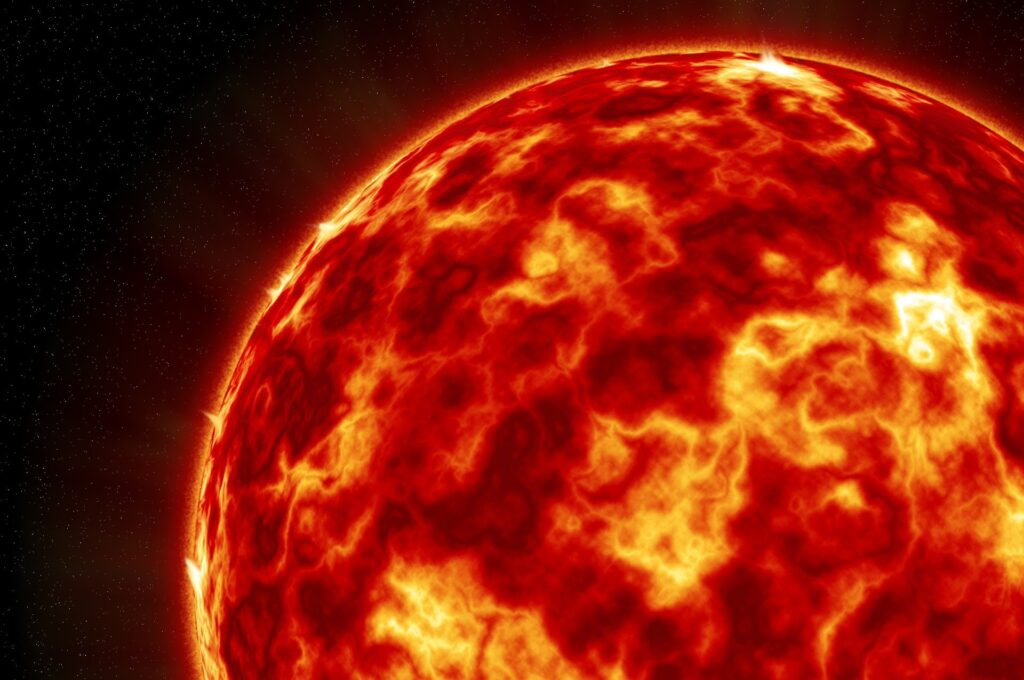The Sun, our closest star, is the powerhouse of the solar system. It provides light, heat, and energy for life on Earth and also serves as a window into the processes governing other stars in the universe. This article delves into the intricate science of the Sun, its structure, function, and significance.
What Is the Sun?
The Sun is a G-type main-sequence star (G2V), commonly called a yellow dwarf. It is located approximately 149.6 million kilometers (93 million miles) from Earth and has an estimated age of 4.6 billion years. Comprising 99.86% of the solar system’s total mass, it exerts gravitational control over all planets, comets, and asteroids within its influence.

Key Characteristics of the Sun
- Mass: 1.989 × 10^30 kilograms
- Diameter: 1.39 million kilometers
- Surface Temperature: Approximately 5,500°C
- Core Temperature: Over 15 million°C
The Sun’s energy output, known as luminosity, is about 3.828 x 10^26 watts, equivalent to the energy released by 100 billion hydrogen bombs per second.
The Structure of the Sun
The Sun’s structure is divided into six distinct layers, each playing a unique role in its operation.
Core
The core is the innermost layer of a star, where nuclear fusion takes place. Here, temperatures exceed 15 million degrees Celsius, and pressure is immense, enabling hydrogen nuclei to fuse into helium. The fusion process releases energy powerfully in the form of gamma rays, showcasing its incredible potential.
Radiative Zone
The radiative zone surrounds the core and transports energy outward through radiation. Photons in this dense region are scattered in all directions and take thousands of years to escape.
Convective Zone
The convective zone lies above the radiative zone. In this layer, convection transfers energy as hot plasma rises to the surface, cools, and then sinks back down. This movement creates convection currents that generate the Sun’s magnetic field.
Photosphere
The Sun’s visible surface, the photosphere, emits light. It is about 500 kilometers thick and has a temperature of approximately 5,500°C. Sunspots, cooler regions with intense magnetic activity, are often observed here.
Chromosphere
The chromosphere lies above the photosphere and appears as a reddish layer during solar eclipses. Its temperature ranges from 6,000°C near the photosphere to 20,000°C at higher altitudes.
Corona
The outermost layer of the Sun’s atmosphere, the corona, stretches millions of kilometers into space. Surprisingly, it is hotter than the photosphere, reaching temperatures of 2 million °C. The corona is the source of the solar wind—a stream of charged particles that influences the entire solar system.

How the Sun Produces Energy
The Proton-Proton Chain Reaction
The Sun generates energy through nuclear fusion in its core. The main process, known as the proton-proton chain reaction, includes:
- Hydrogen Fusion: Four hydrogen nuclei (protons) combine to form a helium nucleus.
- Energy Release: The fusion process releases energy as gamma rays, positrons, and neutrinos.
- Conversion: Gamma rays gradually lose energy as they travel through the Sun’s layers, eventually emerging as visible light.
Energy Transmission
Energy moves through the Sun in two primary ways:
- Radiation: In the radiative zone, energy is carried by photons.
- Convection: In the convective zone, energy is transported by moving plasma.

The Sun’s Influence on Earth
The Sun is essential for life on Earth, affecting everything from climate to biological processes.
Photosynthesis
Plants convert sunlight into chemical energy through photosynthesis, forming the foundation of most food chains.
Weather and Climate
The Sun drives atmospheric circulation by heating the Earth’s surface unevenly, creating wind patterns and ocean currents.
Space Weather
Solar flares and coronal mass ejections release bursts of energy and particles that can disrupt satellites, power grids, and communication systems on Earth.

The Lifecycle of the Sun
Stars like the Sun follow a predictable lifecycle. The Sun is currently in its main-sequence phase, during which it fuses hydrogen into helium. This stage is expected to continue for approximately another 5 billion years.
Future Stages
- Red Giant: The Sun will expand as it exhausts hydrogen in its core, engulfing Mercury, Venus, and possibly Earth.
- Planetary Nebula: It will shed its outer layers, forming a glowing shell of gas.
- White Dwarf: The remaining core will cool and shrink into a dense, Earth-sized star remnant.
The Sun’s Role in Astronomy
The Sun is a natural laboratory for studying stellar processes. Observing it provides insights into:
- Magnetic Activity: The Sun’s magnetic field influences phenomena like sunspots and solar flares.
- Nuclear Fusion: Understanding fusion helps scientists develop sustainable energy sources on Earth.
- Stellar Evolution: The Sun’s lifecycle mirrors that of other stars, offering a template for understanding the universe.
Frequently Asked Questions (FAQs)
What is the Sun made of?
The Sun is primarily composed of hydrogen (about 74%) and helium (about 24%), with trace amounts of heavier elements like oxygen, carbon, and iron.
How does the Sun affect Earth’s climate?
The Sun’s energy drives weather patterns and influences long-term climate changes. Variations in solar activity, such as sunspot cycles, can have minor effects on global temperatures.
Why is the Sun’s corona hotter than its surface?
The exact reason is still under study, but scientists believe magnetic waves and solar flares transfer energy to the corona, heating it to millions of degrees.
What will happen to Earth when the Sun becomes a red giant?
As the Sun expands, it will likely engulf the inner planets. Even if Earth escapes direct destruction, its surface will become uninhabitable due to intense heat and radiation.
Can we harness the Sun’s energy effectively?
Yes, technologies like solar panels convert sunlight into electricity, offering a clean and renewable energy source.
Techserps is a website dedicated to providing the latest insights, trends, and information about technology.



